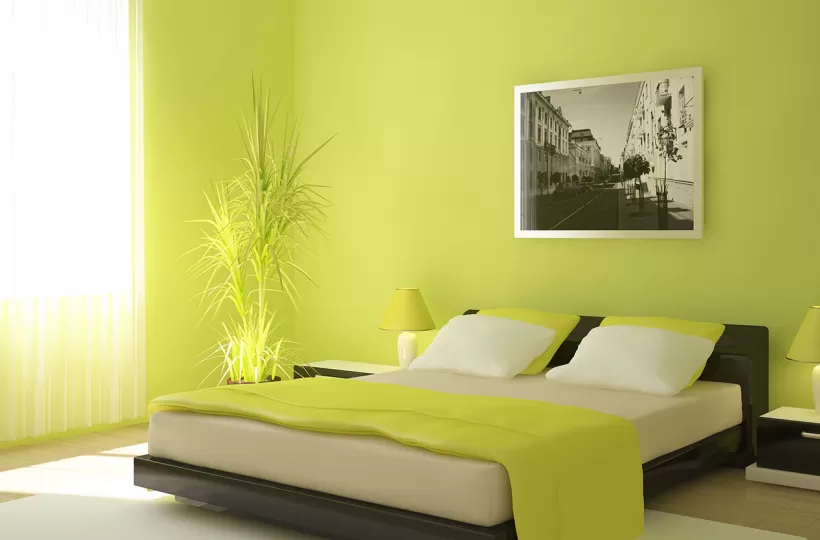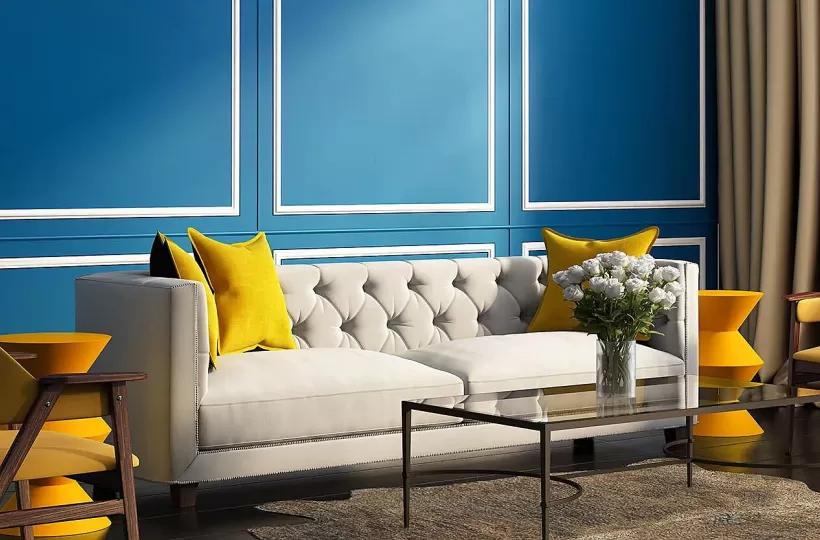
Understanding Interior Design: What It Is and Why It Matters

Create Your Dream Home With Our Painting Experts
Fill the form below to book a free site evaluation by Nerolac Nxtgen painting Services expert
Understanding fundamental principles of interior design can help create beautiful and functional homes. This overview covers the definition, importance, history, elements, and styles of interior design and how to incorporate them in your space.
Introduction to Interior Design
Interior Design is the art and science of enhancing the interior of a building to achieve a healthier and more aesthetically pleasing environment for the people using the space. An interior designer makes spaces functional, safe, and beautiful by determining space planning, selecting materials and finishes, and integrating lighting, furniture, and accessories. Interior design impacts our daily lives by shaping the physical spaces where we live, work, and relax.
Definition of Interior Design
Interior Design involves planning and designing the interior spaces of buildings to create an aesthetic, functional, and safe environment for the occupants. It requires knowledge of spatial planning, building systems, materials, textiles, accessibility, building codes, and psychology. Interior designers work closely with architects and clients to determine space layouts, select finishes and furnishings, and oversee projects from concept through completion. Their role directly impacts people's well-being.
Importance of Interior Design in our Daily Lives
The following are the importance of interior design in our daily lives:
- Interior design significantly impacts our daily lives and well-being.
- It promotes relaxation at home, increases employee satisfaction at work, and encourages learning at school.
- The interior design expresses personal or brand identity.
- Thoughtful interior design provides beauty, improves functionality, and creates tailored environments for users' needs.
Evolution of Interior Design
Interior design in India has developed over centuries and is shaped by both local traditions and outside influences. Today, Indian interior designers blend ancient and modern aesthetics to create unique, culturally resonant spaces.
Historical Background
India has a rich history of interior design, with ornate decorations found in ancient temples, palaces, and homes. Vastu Shastra, the ancient Indian architecture science, provided layout and design principles. Mughal style featured intricate patterns, carvings, and lush fabrics. European influences like Neoclassical and Victorian styles gained popularity during British colonial rule. After independence, Indian interior design blended traditional and modern aesthetics. Iconic designers like Charles Correa and Raj Rewal pioneered modern Indian architecture and interiors.
Influences and Trends
Contemporary Indian interior design draws from both indigenous and global influences. Traditional materials like wood, stone, and textiles are used in modern ways. Handicrafts and artisanal goods add local flair. Nature-inspired motifs connect to India's climate. Bold colours and patterns reference traditional style. Nerolac Zinc Yellow Primer, for example, can serve as a durable, aesthetic choice for surfaces while adding a hint of boldness. Contemporary trends like minimalism and industrial chic are given an Indian twist.
Economic growth has created a demand for luxurious interiors, and globalisation brings international aesthetics. However, cultural values and regional diversity remain strong forces shaping the uniqueness of Indian interior design. Successful spaces balance modernity with local heritage.
Elements of Interior Design
Thoughtful interior design combines various components to create functional and appealing spaces. Elements like colour, lighting, and furnishings all work together to shape an interior's look, feel, and usability.
1. Colour Theory and Psychology
Colours strongly influence mood and emotions. Interior designers carefully select hues to create desired atmospheres. Warm tones like red and yellow energise, while cool blues and greens are calming. Neutrals like brown, tan, and grey promote concentration and relaxation. Colour combinations establish balance and visual interest. Using Nerolac Synthetic Hi-Gloss Enamel, for instance, adds a refined finish and long-lasting vibrancy, enhancing the mood of any room.
2. Space Planning
Effective space planning optimises function and circulation. Designers consider ergonomics, furniture layouts, and user needs. Open concepts promote free flow, while defined rooms provide privacy.
3. Lighting
Both natural and artificial lighting impacts aesthetics and utility. Windows, skylights, and lighting fixtures illuminate spaces appropriately for different uses.
4. Furniture and Accessories
Furnishings must be functional, comfortable, and coordinated with the overall design. Styles, materials, and scale need to suit the space. Accessories like art, plants, rugs, and decorative objects add personality.
Also Read: Interior Painting Ideas That Expert Swear
Responsibilities of an Interior Designer
Interior designers handle a wide range of duties throughout the design process. Their work requires creativity, strong project management, and communication skills.
Creating Functional Spaces
Interior designers focus on optimising function and quality of life for end users. They analyse client needs and map out space plans suited for the intended purpose, whether residential, commercial, or hospitality. Their designs enhance workflow and circulation while providing safety, accessibility, and visual appeal. Interior designers ensure spaces promote health, productivity, and comfort.
Selecting Materials, Finishes, and Fabrics
Interior designers choose materials, finishes, and fabrics that are attractive, durable, eco-friendly, and appropriate for the space. They research options and specify items like flooring, countertops, paints, wall coverings, and upholstery based on client preferences, budgets, and project requirements. Their selections unify the aesthetic while meeting practical needs.
Project Management and Coordination with Clients
Interior designers manage all project phases, from initial concepts to installation. They coordinate with architects, contractors, and clients while adhering to budgets and timelines. Designers present concepts, incorporate feedback, secure permits, review product samples, and oversee construction. Clear communication and organisation are crucial.
Also Read: Guest Room Interior Design Ideas
Different Types of Interior Design Styles
Interior designers draw from various aesthetics to create spaces tailored to clients' tastes and lifestyles. Stylistic approaches range from ornate and lavish to minimalist and modern.
Traditional
Traditional style includes designs that reuse historical forms and classical decorative details. This includes European styles like French, English, and Italian classics and Asian styles like Chinese and Indian. Motifs include ornate woodwork, antiques, rich colours, and lavish fabrics. Traditional rooms feel elegant, formal, and timeless.
Modern/Contemporary
Modern and contemporary styles are minimalist and focus on clean lines, open spaces, and a sleek, uncluttered look. Neutral colours, large windows, lucite, chrome, and glass are commonly used. Contemporary can include unexpected shapes and asymmetric forms for visual interest.
Minimalist
Minimalist interiors are pared-down with a limited colour palette and few accessories. Visual clutter and ornate detailing are avoided to make the architecture and shapes stand out. There is an emphasis on negative space, natural light, and seamless flow.
Industrial
The industrial style incorporates raw, utilitarian materials like exposed brick, concrete, metal, and wood. Piping, ductwork, and structural elements are left revealed for an unfinished warehouse aesthetic. Vintage items like factory carts and leather add character.
Also Read: Trendy Interior House Paint Ideas
How to Incorporate Interior Design in Your Home
There are many ways to apply interior design principles without hiring a professional designer. Start by analysing how you use each space and identifying your style preferences. Consider activities, traffic flow, lighting needs, and aesthetic goals. Select a cohesive colour palette and collect inspiration images. Incorporate your style into critical elements like lighting fixtures, furniture, window treatments, and artwork. Arrange furnishings in a logical layout tailored to your functions.
Add personal touches like plants, pillows, and accessories to enhance visual interest. Take time planning renovations and avoid trendy gimmicks. Focus on quality, durability, and timeless style. Be bold with your colour and design choices, but maintain harmony. Finally, edit clutter and regularly refresh your rooms to keep your home looking curated. Thoughtful details make all the difference in creating an interior you love.
Conclusion
Interior design is an intricate profession that blends aesthetics, functionality, and craftsmanship to create environments tailored to human needs. Understanding the elements and responsibilities involved allows homeowners to make informed design decisions for their personal spaces. With some basic knowledge, anyone can begin incorporating interior design principles into their home.
Thoughtfully applying concepts like space planning, lighting, colour theory, and cohesive styling can transform living spaces into beautiful, functional reflections of personal taste and lifestyle. Interior design impacts our daily lives profoundly, and even simple principles can make a big difference in the comfort and enjoyment of our homes.
Nerolac Paints, a leading paint company in India offers a wide range of wall paint colours & painting services & solutions for homes & offices.

Colour Combination for Walls: 10 Beautiful House Colour Combination Ideas
A Guide To Trending Colour Combinations For Walls With Images
12 Stylish Green Colour Combinations and Photos
Green Colour Combinations
What Colours Match with Blue? 14 Colour Combinations with Blue for Your Home
Blue is a universally popular colour for décor and design
Get in Touch
Looking for something else? Drop your query and we will contact you.
Get in Touch
Looking for something else? Drop your query and we will contact you.
Popular Searches
Get in Touch
Looking for something else? Drop your query and we will contact you.


